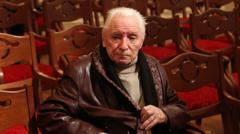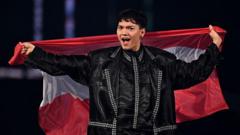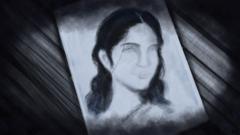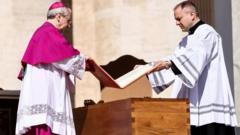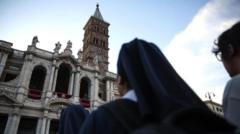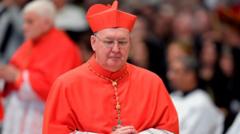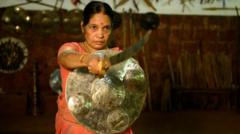Keralan theyyam performances offer a unique glimpse into a spiritual practice where theatricality meets devotion, highlighting the roles of marginalized communities, intricate costumes, and the significance of fire in creating an unforgettable experience.
The Divine Transformation: Exploring Kerala's Theyyam Rituals
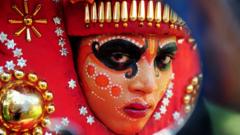
The Divine Transformation: Exploring Kerala's Theyyam Rituals
A mesmerizing journey into the ancient Indian tradition where performers embody deities, celebrating devotion, mythology, and the power of ritual in Kerala.
In the southern Indian state of Kerala, theyyam, a unique and ancient ritual, has been captivating audiences for nearly three centuries. In a tradition deeply seated in tribal practices and later infused with Hindu mythology, theyyam transcends mere performance to become a profound expression of devotion, with performers transforming into living deities.
Predominantly conducted by men from marginalized castes and tribal communities, nearly a thousand theyyam performances are held annually, primarily in family estates and temples. The participants don elaborate costumes and face paint, engaging in trance-like dances and rhythmic music to channel divine energies. Historian KK Gopalakrishnan has documented his family's involvement in this vibrant tradition in his book "Theyyam: An Insider’s Vision," providing insight into the devotion, mythology, and even the evolving roles of performers from different backgrounds, including Muslims.
The theyyam season spans from November to April, coinciding with the cooler months following the monsoon. Gopalakrishnan's ancestral home in Kasaragod serves as a hub for these ritual performances, drawing large crowds eager to witness the elaborate ceremonies. Each performance showcases themes that pay homage to deities, warriors, and ancestral spirits, often preceded by ritualistic gatherings in sacred forests that honor the essence of the deities in their earthly realms.
Gopalakrishnan, representing the matrilineal Nambiar community, explains the integral role of women in these rituals. The senior female members lead preparations and make vital decisions, highlighting their importance in upholding family traditions and ensuring the event's smooth execution.
The rituals are characterized by dramatic displays, including fire-walking and chanting mystical verses. Fire holds a special sapiential significance in theyyam, symbolizing purification and the transformative power of the divine, as performers sometimes interact directly with flames to illustrate their invincibility.
Encompassing a spectrum of divine manifestations, from gods and goddesses to animal spirits, the theyyam showcases a rich tapestry of mythology. Specific performances invoke fierce deities, such as the kali figure of Raktheswari, whose portrayal emphasizes raw energy and the fierce power of divine wrath, seeking balance and justice through dramatic gestures.
As performers meticulously prepare their costumes and makeup—which often includes distinct facial markings and vibrant colors—they embark on a journey of transformation that blends intense physicality and spiritual intensity. The meticulous detailing in the attire not only enhances visual appeal but also reflects the deep cultural and religious significance of each deity.
An embodiment of nature's reverence, some theyyam figures portray animal spirits like crocodiles, serving as potent symbols of protection and connection to the natural world. Following their performances, these figures often engage directly with devotees in sacred blessings, offering solace amidst heartfelt prayers—illustrating the profound interplay between performance and personal devotion.
As the mesmerizing theyyam rituals continue to thrive in Kerala, they not only serve as a testament to the cultural heritage of the region but also highlight the resilience and spirituality of communities that have kept these rituals alive through centuries of transformation and adaptation.






